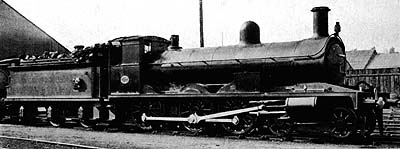History
The coming of the railway

Prior to the opening of the Highland Railway in 1863, Newtonmore was already a fairly active centre for commerce, situated at the meeting of the drove roads from Perth, Fort William and Inverness. There was also a drove road over the Corrieyarick pass, which brought the black cattle from the west and the islands.
jonesgoodsThe advent of the railway so improved the comfort and speed of travel that it became fashionable to ‘holiday in the Highlands’, bringing an influx of wealthy visitors to Newtonmore. This rise in popularity was given further impetus by various pamphlets and articles in the press extolling the virtues of the healthy highland air and water to be found in Newtonmore. Hopes were raised locally for a further increase in popularity by a proposal to bring the railway line from Fort William to join the Highland Railway at Newtonmore. This possibility was raised due to the inability of the Caledonian Railway to negotiate rights to build a direct route south, but the engineering difficulties of building a line over the vast wasteland of Rannoch Moor eventually proved easier to solve than reaching a running rights agreement with their competitors of the Highland Railway and the line from Fort William turned south at Tulloch, where it still runs today.
The construction of the Highland Railway from Perth – or more accurately, Stanley Junction, where the Caledonian Railway’s line to Aberdeen diverged to the north east, involved the building of 8 viaducts, 126 bridges over water and 119 road or track bridges. Total cost was £919,204, or £8,860 per mile. The stretch of track past Dalwhinnie and through Drumochter Pass was over boggy ground and it is on record that a constant watch had to be kept on the level of the rail bed. Frequent additions of gravel had to be made to keep the level – 5 or 6 feet in places, and in one instance, over 25 feet had to be added before the line settled on a firm base.